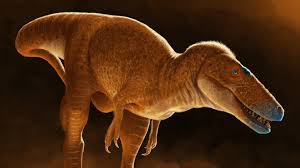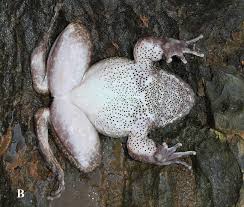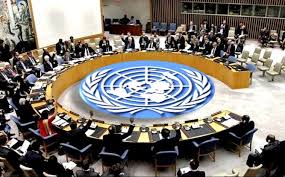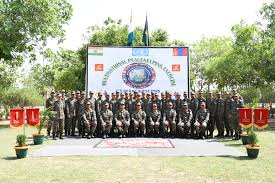Today’s Current Affairs: 12th June 2025 for UPSC IAS exams, State PSC exams, SSC CGL, State SSC, RRB, Railways, Banking Exam & IBPS, etc
Table of Contents
Khankhuuluu Mongoliensis:

Scientists have confirmed that Khankhuuluu mongoliensis, dubbed the “Dragon Prince”, lived around 86 million years ago—approximately 20 million years before T. rex.
- Khankhuuluu mongoliensis, whose name translates to “Dragon Prince of Mongolia,” roamed the Earth approximately 86 million years ago during the Cretaceous period.
- The fossils of this new species were actually found in the 1970s in Mongolia’s Gobi Desert but were only recently recognized as belonging to a distinct species after advanced analysis and reexamination.
- This medium-sized, fleet-footed predator weighed about 750 kilograms (roughly the size of a horse) and measured up to 4 meters in length, making it two to three times smaller than its massive descendants like Tyrannosaurus rex.
- The species is characterised by a long, shallow skull, tiny rudimentary horns, and a lighter, more agile build compared to later tyrannosaurs.
- Unlike the bone-crushing T. rex, Khankhuuluu was a mesopredator, relying on speed and agility to hunt smaller prey.
- This prehistoric predator is now considered the closest-known ancestor to the Tyrannosaurus rex and played a pivotal role in setting tyrannosaurs on the evolutionary path to ruling Earth as apex predators.
- Khankhuuluu marks a crucial evolutionary transition from smaller, agile hunters to the colossal apex predators that dominated the late Cretaceous.
- Its discovery has bridged a significant gap in the fossil record, revealing that tyrannosaurs originated in Asia and migrated to North America, where they evolved into the iconic T. rex.
World Day Against Child Labour 2025:

World Day Against Child Labour is observed every year on June 12. The day serves as a reminder of the urgent need to protect children from exploitation and uphold their rights.
- World Day Against Child Labour is a global observance marked on June 12 every year, serving as a crucial reminder to build a world free of child labour, where children worldwide are not forced into work at the expense of their education and well-being.
- The International Labour Organization (ILO) first observed World Day Against Child Labour on June 12, 2002, at its Geneva headquarters.
- Since then, it has been marked globally to shine a light on this ongoing crisis. The year 2025 marks the 21st anniversary of this important observance.
- Theme: The theme for this year is ‘Progress is clear, but there’s more to do: let’s speed up efforts!’ It reflects the progress made so far in reducing child labour, while also emphasizing the need to intensify global efforts to meet international goals.
- In India, the government has implemented a National Policy on Child Labour since 1987.
- This policy emphasises both the rehabilitation of affected children and the need to tackle the root cause — poverty — by improving the economic well-being of their families.
TOI-6894b : Giant Planet

Scientists have made a groundbreaking discovery: a giant planet, TOI-6894b, orbiting a tiny red dwarf star—something previously believed to be impossible.
- TOI-6894b, a gas giant planet, roughly the size of Saturn, has been found orbiting an unusually small red dwarf star.
- This rare pairing defies current models, which say small stars don’t have enough material in their surrounding disks to form such large planets.
- The planet was found about 241 light-years from Earth in the constellation Leo.
- TOI-6894b is about 1.07 times the diameter of Saturn but has just over half its mass.
- This makes the planet very low in density, similar to that of a beach ball. Despite its large size, the planet orbits extremely close to its host star, completing a full revolution in just under three Earth days.
- The star it orbits, TOI-6894, is a red dwarf with only about 21% the mass of the Sun and roughly 250 times dimmer.
- In terms of physical size, the star is just 2.5 times wider than the planet itself, a remarkable size ratio rarely seen in planetary systems.
Ohler’s Spiny Frog:

Ohler’s Spiny Frog, a newly discovered large stout frog with spiny chest, was found at a waterfall in Vietnam—over 4 inches long, challenging conservation norms.
- Ohler’s Spiny Frog refers to large, robust frogs within the Quasipaa or related genera, which are known for their spiny chests and large size.
- These frogs are primarily found in fast-flowing streams of evergreen forests in Southeast Asia and the Himalayan foothills.
- Rocky streams in evergreen forests, particularly in northern Vietnam, southern China, and the Himalayan region.
- Key Features:
- Stout body with rough, spiny tubercles on chest (in males), toes are partially webbed
- Males develop throat and chest spines during breeding, a characteristic linked to spiny frog identification
- Skin colouration is dark brown with yellowish mottling; eyes are dark greenish.
- Size reaches a snout-vent length exceeding 10 cm (typically 7–8 cm).
Taliban Sanctions Committee & 1373 Counter-Terrorism Committee:

Pakistan has been appointed Chair of the 1988 Taliban Sanctions Committee and Vice Chair of the 1373 Counter-Terrorism Committee as part of its term as a non-permanent UNSC member (2025–26).
1988 Taliban Sanctions Committee (TSC):
- A subsidiary body of the UNSC, the 1988 Committee monitors the implementation of sanctions specifically on Taliban-linked individuals and entities.
- Established in: 2011, under UNSC Resolution 1988, after separating from the broader 1267 Al-Qaeda Sanctions regime.
- Objective is to ensure compliance with travel bans, arms embargoes, and asset freezes targeting individuals affiliated with the Taliban who pose a threat to peace in Afghanistan.
1373 Counter-Terrorism Committee (CTC):
- A technical committee created to implement UNSC Resolution 1373 following the 9/11 attacks, aimed at strengthening global legal and operational counter-terrorism efforts.
- Established in: 2001, under Chapter VII of the UN Charter, making its obligations binding on all UN member states.
- Objective is to compel states to criminalize terrorism, prevent terrorist financing, and deny safe havens to terrorists.
Tourette syndrome:

Tourette syndrome affects an estimated 0.3% to 1% of the global population.
- Tourette syndrome is a neurological disorder that causes sudden, involuntary movements or vocal sounds known as
- It typically emerges between ages 2 and 15, with the average onset around six.
- It affects an estimated 0.3% to 1% of the global population, with a higher prevalence among boys than girls.
- “Tics can range from mild to severe. In severe cases, they can significantly impact communication, daily functioning, and quality of life.
- Tics are broadly classified as simple or complex.
- Simple motor tics involve a single muscle group and include eye blinking, facial grimacing, shoulder shrugging, and head jerking.
- Simple vocal tics include throat-clearing, sniffing, barking, or grunting.
- Complex motor tics involve coordinated patterns and may include touching objects, hopping, or bending.
- Complex vocal tics may involve repeating one’s own or others’ words (echolalia), or, in rare cases, using obscene language (coprolalia).
- Tics often worsen with stress or excitement and may improve when the person is calm and focused. They typically reduce during light sleep and disappear in deep sleep.
- Tourette’s rarely occurs in isolation. It commonly coexists with ADHD, OCD, anxiety, depression, learning disabilities, and autism spectrum disorders.
- Currently, there is no cure for this syndrome but treatments are available to help manage some symptoms.
- Cognitive Behavioural Therapy (CBT) has shown very promising outcomes.
Cathepsin B:

Researchers at the National Institute of Animal Biotechnology (NIAB) found that reducing the activity of a cellular protein called ‘Cathepsin B’ (Cat B) helps preserve the ovarian reserve.
- Cathepsin B is a lysosomal cysteine protease.
- It is primarily localized within subcellular endosomal and lysosomal compartments. It is involved in the turnover of intracellular and extracellular proteins.
- It is integrated into almost all lysosome-related processes, including protein turnover, degradation, lysosome-mediated cell death, antigen processing and apoptosis.
- It degrades extracellular matrix proteins like collagen and fibronectin.
- It is involved in neuropathological and neurodegenerative diseases such as dementia, Alzheimer’s disease, and traumatic brain injury.
- This ovarian reserve is the finite pool of egg cells (oocytes) that female mammals are born with. Unlike sperm, these crucial egg cells cannot be regenerated.
- Over time, the quantity and quality of these eggs naturally decline due to factors like oxidative stress, inflammation and general cellular wear.
- This process accelerates with age. ‘Cat B,’ a protein-degrading enzyme, seems to be a key driver of this decline.
- By lowering its levels, we may be able to delay egg loss, effectively extending fertility naturally.
CROPIC Initiative:

The Ministry of Agriculture and Farmers Welfare plans to launch CROPIC, a study to gather crop information using field photographs and AI-based models.
- CROPIC stands for Collection of Real Time Observations & Photo of Crops.
- It is an initiative under the Pradhan Mantri Fasal Bima Yojana (PMFBY) with a dual purpose of monitoring crop health and stress and automation of crop loss assessment and payment of claims to affected farmers using computer vision technology and photo-analytic models.
- Under this initiative, crops will be photographed four-five times during their cycle, and the pictures will be analysed to assess their health and potential mid-season losses.
- The study will be carried out for two seasons initially, kharif 2025 and rabi 2025-26.
- The study envisages collection of field photographs during the crop season using CROPIC mobile application which has been developed by the Union Ministry of Agriculture and Farmers’ Welfare.
- The photographs from the field will be crowd-sourced directly from farmers.
- Then, they will be analysed for information including crop type, crop stage, crop damage and its extent.
- This model will use an AI-based cloud platform for photo analysis and information extraction, and a web-based dashboard for visualisation.
- Also, when compensation or insurance is to be paid to farmers, officials will collect the photographs using the CROPIC Mobile App.
- It will be rolled out initially in at least 50 districts per season.
- These districts will be well distributed in different agro-climatic zones covering the three major notified crops (notified crops are those covered under insurance schemes like PMFBY) in each district for each season, initially.
- The Fund for Innovation and Technology (FIAT) under PMFBY will be used for funding CROPIC.
Exercise Khaan Quest 2025:

The Indian Army contingent reached Ulaanbaatar, Mongolia for the Multinational Military Exercise KHAAN QUEST, which is scheduled to be conducted from 14th to 28th June 2025.
- Exercise Khaan Quest is a multinational military exercise.
- The exercise will bring together military forces from around the world to collaborate and enhance their peacekeeping capabilities.
- Last edition of Exercise KHAAN QUEST was conducted in Mongolia in 2024.
- The exercise first started as a bilateral event between USA and Mongolian Armed Forces in the year 2003.
- The Indian Army contingent comprising 40 personnel is being represented mainly by troops from a Battalion of the KUMAON REGIMENT along with personnel from other Arms and Services. One Woman Officer and two Women Soldiers will also form part of the contingent.
- Aim of Exercise to prepare Indian Armed Forces for peacekeeping missions while operating in a multinational environment, thereby increasing interoperability and military readiness in peace support operations under Chapter VII of United Nations Charter.
- The exercise will focus on a high degree of physical fitness, joint planning and joint tactical drills.
- It will enable the participating countries to share their best practices in Tactics, Techniques and Procedures for conduct of joint operations.
- The exercise will facilitate developing interoperability, bonhomie and camaraderie between soldiers of the participating countries.
NeVA Digital Platform Launched in Puducherry:
Union Minister of State for Information & Broadcasting & Parliamentary Affairs inaugurated the National e-Vidhan Application (NeVA) platform for the Puducherry Legislative Assembly.NeVA is a workflow-based digital platform launched under the “One Nation, One Application” initiative to digitise legislative functioning in a paperless, efficient, and transparent manner.It is funded through 100% central assistance by the Ministry of Parliamentary Affairs, hosted on NIC Cloud – MeghRaj. Nagaland was the first state to implement NeVA in 2022.
FSIB Picks R Doraiswamy as MD & CEO of LIC:
The Financial Services Institutions Bureau (FSIB) has recommended R Doraiswamy, an experienced LIC executive, for the coveted post of Managing Director (MD) and Chief Executive Officer (CEO) of the Life Insurance Corporation of India (LIC). With over 38 years of service at LIC, Doraiswamy is recognized for his extensive expertise in operations, marketing, technology, and academics. The final decision now rests with the Appointments Committee of the Cabinet, which will give the official approval.The FSIB interviewed four senior LIC officials for the CEO & MD position. Based on performance, experience, and eligibility parameters, R Doraiswamy was recommended. The post has gained attention due to its strategic importance amid LIC’s ongoing leadership restructuring.
SEBI to Launch ‘SEBI Check’ to Verify UPI IDs:
The Securities and Exchange Board of India (SEBI) announced a new initiative titled “SEBI Check.” This tool will allow investors to verify UPI payment handles used by SEBI-registered intermediaries before making transactions. The new functionality, expected to be launched soon, will significantly increase the safety and transparency of financial operations in the securities market. Additionally, SEBI has mandated a new UPI payment mechanism for all intermediaries collecting funds from investors, effective from October 1, 2025.SEBI announced the upcoming launch of “SEBI Check” to verify UPI IDs. This initiative follows the increasing misuse of unverified UPI handles by fraudulent, unregistered entities impersonating legitimate financial intermediaries. The new UPI-based payment system will become mandatory for SEBI-registered entities from October 1, 2025.
Reserve Bank of India (RBI) will re-issue ₹5,000 crore of Sovereign Green Bonds:
The Reserve Bank of India (RBI) will re-issue ₹5,000 crore worth of Sovereign Green Bonds (SGrBs) as part of a ₹30,000 crore government securities (G-Secs) auction scheduled for June 13, 2025. These bonds, aimed at funding environmentally sustainable infrastructure projects, form a part of India’s ongoing strategy to promote green economic growth and attract climate-conscious investors.The RBI announced the re-issuance of green bonds totaling ₹5,000 crore maturing in 2054. These will be part of a ₹30,000 crore G-Sec auction on June 13, 2025, which includes two other dated securities. Green bonds will finance eco-friendly sectors like renewable energy, clean transport, and energy efficiency.
SBI General Insurance Appoints Mohd. Arif Khan as Deputy CEO:
SBI General Insurance, one of India’s leading general insurance companies, has appointed Mohd. Arif Khan as its Deputy Chief Executive Officer. A seasoned professional with over 25 years of service in the State Bank of India (SBI), Khan brings deep banking and leadership experience that is expected to strengthen the company’s strategic and operational capabilities in a rapidly evolving insurance landscape.SBI General Insurance officially announced Mohd. Arif Khan’s appointment as Deputy CEO. His vast experience in banking and digital transformation initiatives positions him to accelerate innovation, customer engagement, and market expansion. The appointment reflects SBI General’s commitment to leadership development and customer-focused insurance solutions.
Aadhaar OTP Must for Tatkal Bookings:
To curb malpractices and ensure fair access to Tatkal tickets, the Ministry of Railways has announced that Aadhaar-based OTP authentication will be mandatory for booking Tatkal tickets on the IRCTC website and mobile app starting July 15, 2025. The updated rules also impose time-bound restrictions on agents and bring enhanced transparency to the reservation system.The Railway Ministry declared the rollout of mandatory Aadhaar OTP authentication for all Tatkal bookings done online. The revised rules will be enforced from July 15, 2025. This move is aimed at reducing bulk bookings, deterring unfair practices, and ensuring genuine passengers benefit from the Tatkal scheme.
WEF Gender Gap Index 2025:
India has ranked 131st out of 148 countries in the 2025 Global Gender Gap Report released by the World Economic Forum (WEF), slipping two positions from its previous rank. Despite slight gains in economic participation and educational attainment, the overall gender parity score remains at 64.1%, reflecting slow progress. Structural barriers, particularly in political empowerment, continue to hold back significant improvements in India’s gender landscapeThe report shows mixed results for India, with some improvement in economic participation but a decline in political empowerment, especially in Parliament and ministerial representation.
Sant Kabirdas Jayanti:
Sant Kabirdas Jayanti was celebrated on June 11, marking his 648th birth anniversary.This occasion honours the 15th-century poet-saint’s timeless contribution to spiritual unity and social reform.Sant Kabirdas was a 15th-century mystic poet, Bhakti saint, and social reformer who lived in Varanasi, Uttar Pradesh.Believed to be born in 1440 and raised by a Muslim weaver family, Kabir’s life symbolized religious convergence and spiritual universality.He authored Bijak, Sakhi Granth, Kabir Granthavali, Anurag Sagar, and many of his verses appear in the Guru Granth Sahib
Passage Exercise (PASSEX):
The Indian Navy and UK Royal Navy conducted a Passage Exercise (PASSEX) in the North Arabian Sea.PASSEX refers to joint naval drills conducted between friendly navies when they cross each other during deployments. It enhances interoperability, communication, and strategic cooperation at sea.Conducted in the North Arabian Sea, a region of geostrategic importance for global maritime trade and security. Participating Nations: India: INS Tabar (stealth frigate), a conventional submarine, and P-8I long-range maritime aircraft. United Kingdom: HMS Prince of Wales (aircraft carrier) and HMS Richmond (frigate) of the UK Carrier Strike Group.
India participated in the 2nd Session of the IALA Council:
India participated in the 2nd Session of the IALA Council in Nice, France, as the Vice President of the organization. India also invited members for the 3rd General Assembly (2025) and 21st IALA Conference (2027) in Mumbai.IALA is an intergovernmental technical body responsible for standardizing and enhancing marine aids to navigation (AtoN) to ensure maritime safety and efficiency globally.Established in 1957 as a non-governmental body and became an intergovernmental organization in 2021. Headquarters: Saint-Germain-en-Laye, near Paris, France. India is a Council member since 1980 and was elected Vice President during the 1st General Assembly in Singapore (2023). India’s tenure as Vice President (2023–2027) marks its rising maritime stature and technical leadership.




